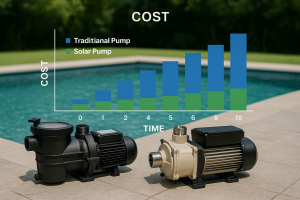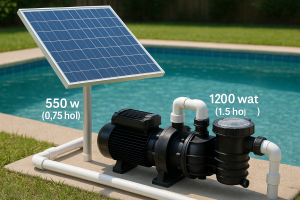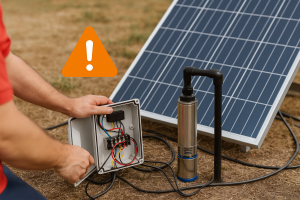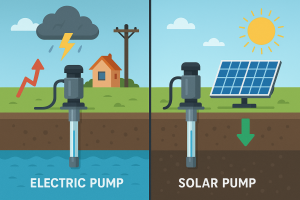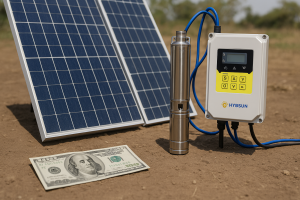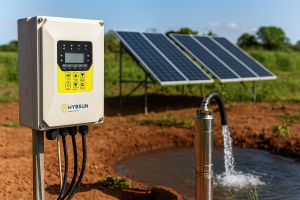Tired of high electricity bills just to keep your pool sparkling? Wondering if solar can save you money and hassle? You're in the right place.
Yes, you absolutely can run your pool pump on solar power. The most straightforward way is by using a dedicated DC (Direct Current) pool pump with its own set of solar panels. This setup allows your pump to run whenever the sun shines.
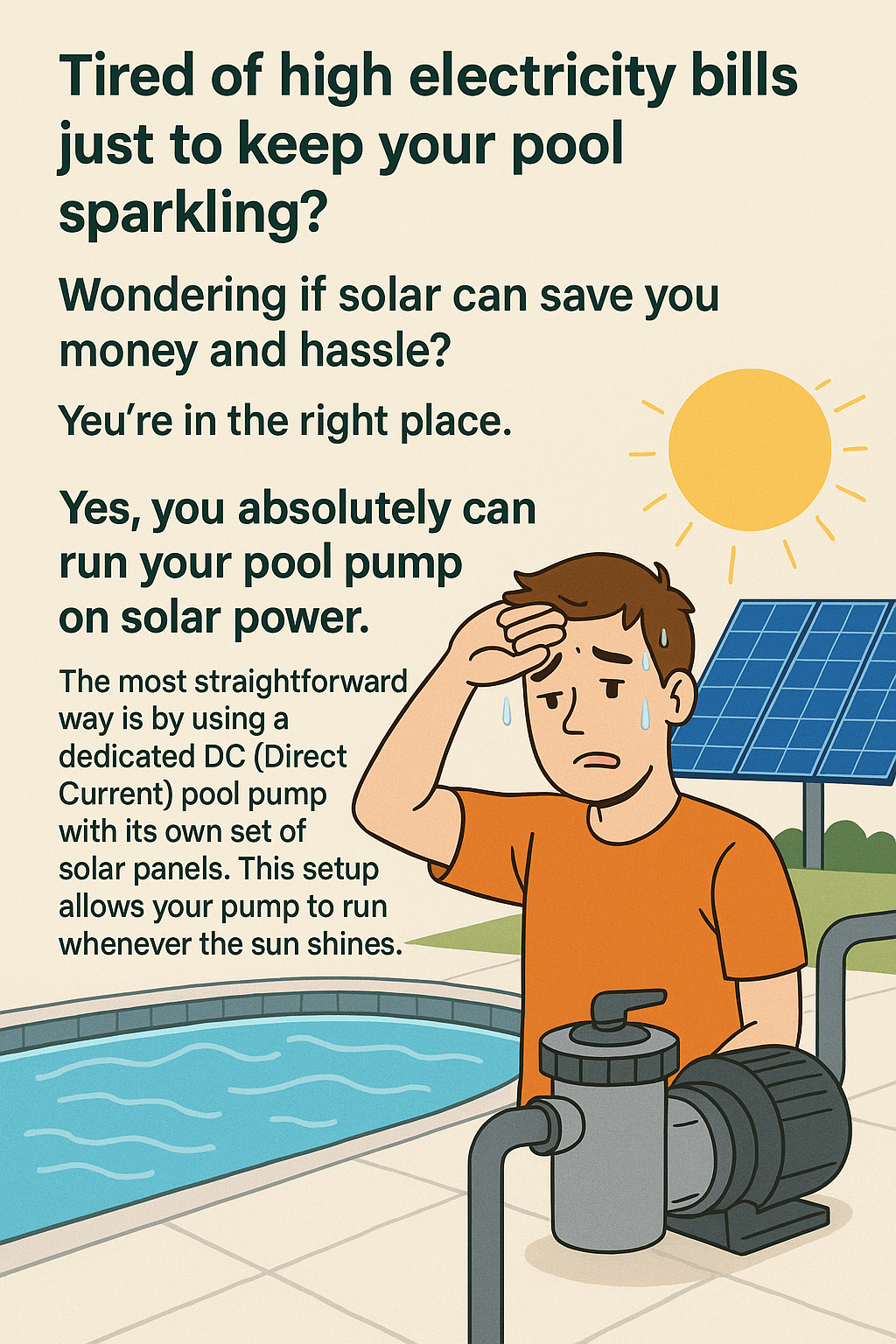 "Solar Powered Pool Pump System")
"Solar Powered Pool Pump System")
Running a pool pump on solar power is a smart move for many homeowners I've talked to. It's not just about saving money on electricity bills, though that's a big plus. It’s also about becoming more energy independent and reducing your carbon footprint. I've seen in my own business how smart investments in technology can lead to long-term savings and efficiency. Just like choosing the right CNC machine can transform a workshop, choosing the right solar setup can transform your pool maintenance. Let's explore how you can make this happen for your pool.
Can I run my pool pump off solar power?
Worried your existing pump setup is too complex for solar? Or perhaps you think solar is only for off-grid homes? Let's clear that up.
Yes, you can definitely run your pool pump using solar power. Many modern solar-specific pool pumps are designed for this, or you can adapt systems for existing pumps with the right equipment.
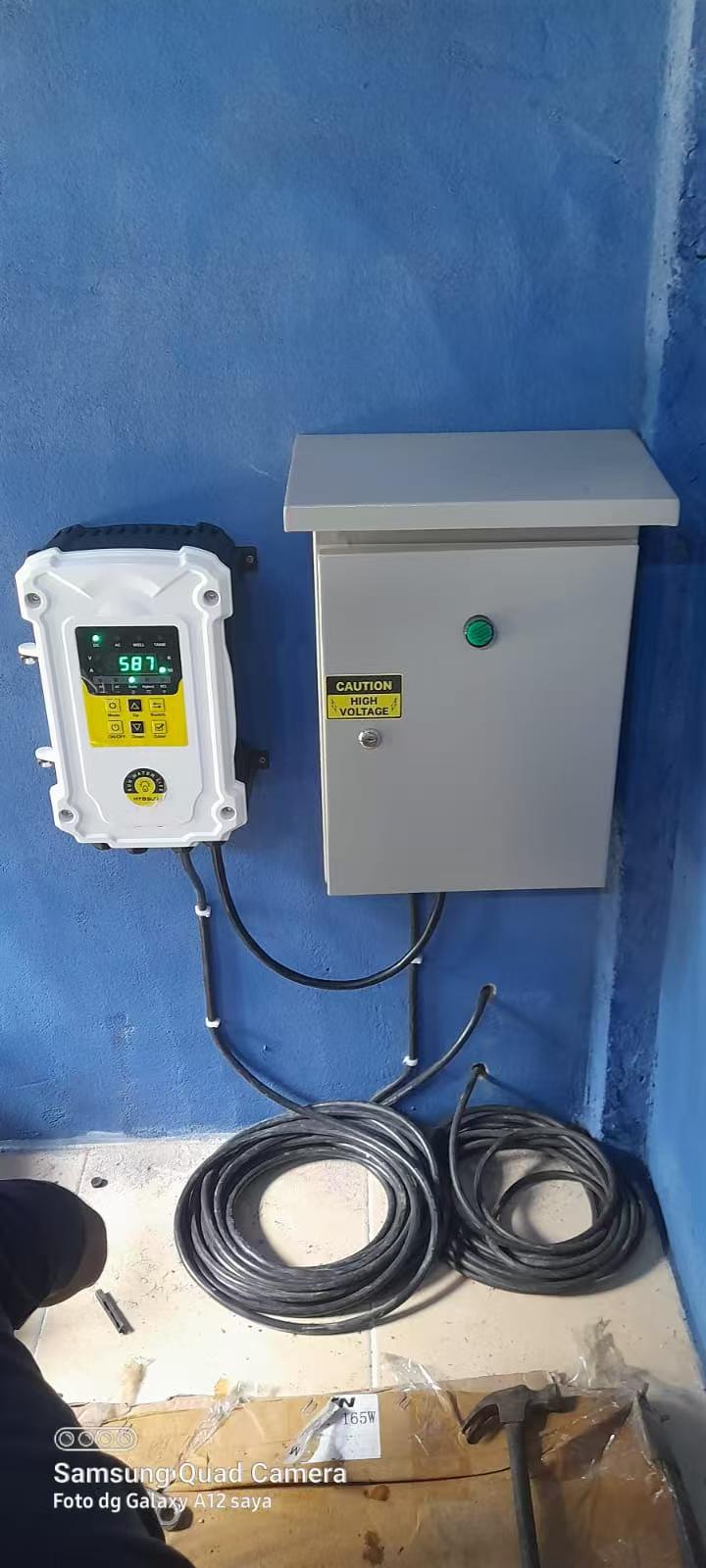
"Solar Pool Pump Controller")
Diving deeper into this, the great news is that technology has made this very achievable. When I first started my mold-making journey, I learned that having the right tool for the job makes all the difference. It's the same with solar pool pumps.
Understanding Your Pump Options
The most common and efficient way is to use a DC (Direct Current) solar pool pump. These pumps are designed to work directly with the DC electricity produced by solar panels. This means less energy is lost in converting power from DC (from panels) to AC (for standard pumps) and then sometimes back again.
You might also hear about AC (Alternating Current) pumps. Your home electricity uses AC. If you have an existing AC pool pump, you can run it on solar, but it usually requires an inverter to change the DC solar power to AC. This adds a bit of complexity and potential for energy loss. For a dedicated solar setup for your pool, a DC pump is often the simpler and more efficient route. I recall a client who was building a new guesthouse with a pool; we discussed how starting with a DC pump specifically for solar would be much more straightforward than trying to retrofit an older AC system.
Direct Connection Benefits
A dedicated solar setup for your pool pump means the panels are wired directly to the pump, often through a controller.
- Simplicity: Fewer components can mean an easier installation.
- Efficiency: Runs when the sun shines, which is often when you want to circulate pool water anyway.
- Off-Grid for the Pump: Your pool pump's operation becomes independent of the grid. Power outages won't stop your pool from circulating, as long as the sun is out.
Think of it like dedicating a specific machine in a workshop for a particular task. It’s optimized and ready to go.
How many solar panels are needed to run a pool pump?
Figuring out solar panel numbers can seem tricky. Is it one big panel, or a whole roof full? Let's get an idea of what's typical.
Typically, for a dedicated DC solar pool pump, you might need between 3 to 6 solar panels, depending on the pump's power and panel wattage. It's about matching energy production to consumption.
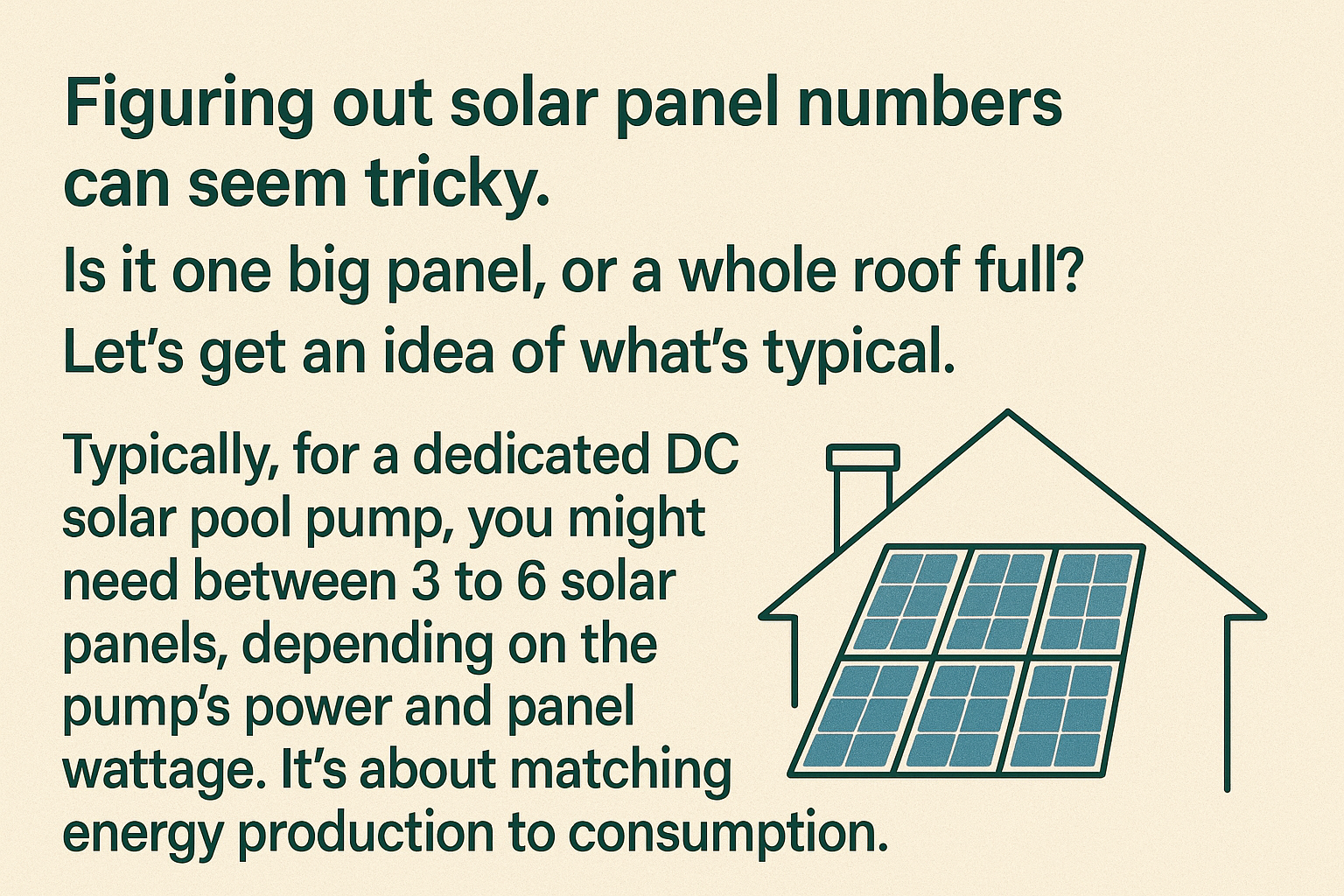
"Solar Panels for Pool Pump")
The exact number of solar panels isn't a one-size-fits-all answer. It’s like when I'm quoting a mold project; I need the specifics of the part design, the material, and the production volume to give an accurate estimate. For solar panels and your pool pump, we need to look at a few key factors:
Key Factors Determining Panel Count
- Pump Power Rating (Wattage): This is the most important factor. Pool pumps can range from a few hundred watts to over 1500 watts (1.5kW). A more powerful pump needs more solar energy. You'll find this information on the pump's label or in its manual.
- Solar Panel Wattage: Solar panels also have a wattage rating. Common sizes are 250W, 300W, 350W, or even 400W+. Fewer high-wattage panels might be needed compared to more lower-wattage panels to achieve the same total power.
- Sunlight Hours (Peak Sun Hours): Your geographic location and the amount of direct sunlight your panels will receive daily are crucial. An area with 5 peak sun hours will generate more energy than an area with 3, using the same panels.
- Pump Type (DC vs. AC): As mentioned, DC pumps are generally more efficient when run directly from solar. If you're running an AC pump via an inverter, you might need slightly more panel capacity to account for conversion losses.
A Simple Calculation Idea
Let's say you have a DC pool pump that requires 750 watts to run.
And you choose solar panels that are 250 watts each.
The basic math would suggest: 750 watts (pump) / 250 watts (panel) = 3 panels.
However, you need to account for real-world conditions like less-than-perfect sunlight, panel degradation over time, and ensuring enough power even on slightly overcast days. So, it's common to oversize the solar array slightly. For that 750W pump, you might go for 4 x 250W panels (1000W total) or 3 x 300W panels (900W total) to be safe. My insight mentioned 4-6 panels, which aligns with pumps in the 0.75 HP to 1.5 HP range using typical 250-350W panels.
Here’s a rough guide:
| Pump Size (HP) | Typical Wattage (approx.) | Estimated Panels (300W each) |
|---|---|---|
| 0.5 HP | 400 - 600 W | 2 - 3 |
| 0.75 HP | 600 - 800 W | 3 - 4 |
| 1.0 HP | 750 - 1100 W | 3 - 5 |
| 1.5 HP | 1100 - 1500 W | 4 - 6 |
Always consult with a solar professional to get precise calculations for your specific pump and location. It’s like getting an expert to review a complex mold design – their experience can save you headaches later.
Will a 100 watt solar panel run a pool pump?
Hoping a small, single panel will do the job? Maybe you saw a 100W panel at a good price. It's a common question.
No, a single 100-watt solar panel is almost certainly not enough to run a typical swimming pool pump. Most pool pumps require significantly more power to operate effectively.
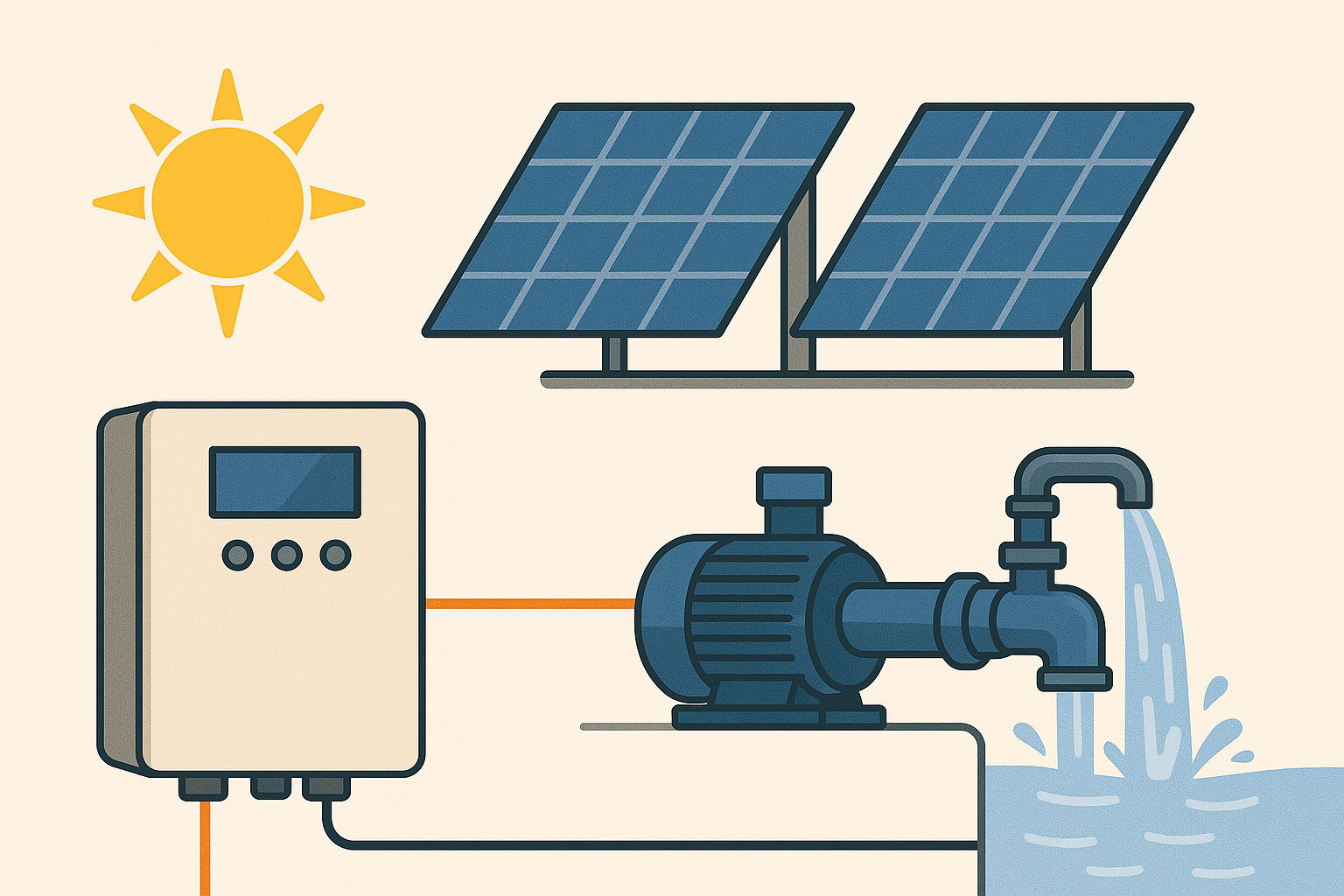
"100 Watt Solar Panel")
I often see people looking for the most economical solution, which is smart. In mold making, sometimes a smaller machine can do a job, but other times, you truly need the larger capacity. The same principle applies here. A 100-watt solar panel has its uses, but powering a standard pool pump isn't usually one of them.
Why a 100W Panel Falls Short
Pool pumps are hardworking machines. They need to move a large volume of water through filters, heaters, and plumbing.
- Power Demand: Even a smallish pool pump might draw 500 watts. Larger pumps can easily exceed 1000 watts (1kW) or even 1500 watts (1.5kW).
- Startup Surge: Pumps, like many motors, can draw even more power for a brief moment when they start up (inrush current). A 100W panel simply can't provide this.
A 100W panel produces, at best, 100 watts of power under ideal sunny conditions. Trying to run a 750W pump with a 100W panel is like trying to power a large industrial press with a small hobby motor – it just won't have the oomph. The pump either won't start, or it will try to start and potentially damage itself or the panel's controller due to insufficient power.
What Can a 100W Panel Do?
While not for your main pool pump, a 100W panel is useful for:
- Trickle charging batteries: For RVs, boats, or small off-grid systems.
- Powering small electronics: Lights, small fans.
- Running very small water features: Perhaps a tiny decorative fountain pump, but not a pool circulation pump.
- Part of a larger array: You could use multiple 100W panels connected together (in series or parallel) to achieve a higher total wattage. For example, ten 100W panels could provide 1000W, which might be enough for some pool pumps. But then you're dealing with more wiring and space than if you used, say, three 330W panels.
So, while a 100W panel is a handy piece of kit, for your pool pump, you'll need to think bigger in terms of total solar wattage. It’s about matching the tool to the task.
How many solar panels does it take to run a water pump?
Thinking beyond just pool pumps? Maybe you have other water-moving needs. The core question about panel numbers still applies.
The number of solar panels needed for any water pump depends entirely on that specific pump's power requirements (wattage or horsepower) and your daily sunlight availability.
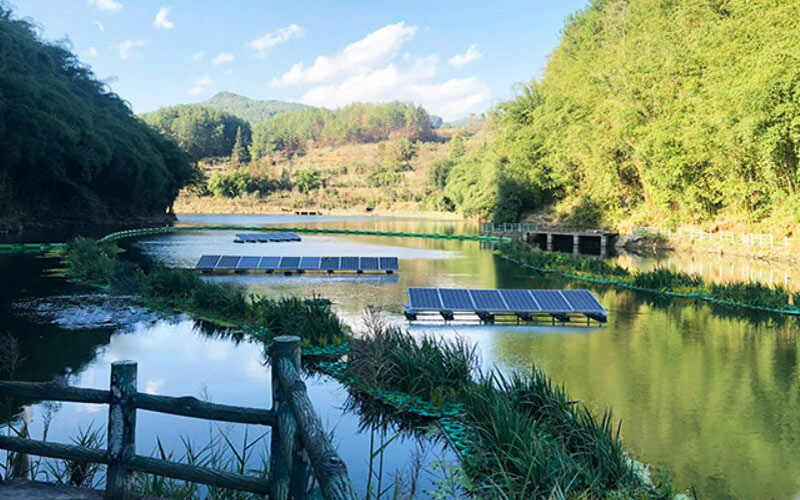
"Solar Panels for Different Water Pumps")
This question is a bit broader, like asking "how much steel do I need?" Well, for what kind of mold? A tiny one for a bottle cap, or a huge one for a car bumper? The answer varies greatly. It's the same for water pumps. Not all water pumps are created equal in their energy demands.
Understanding Different Water Pumps
Let's look at a few examples to see how needs can vary:
- Small Fountain/Pond Pump: These might only use 10-50 watts. A single small solar panel (maybe 20W to 100W) could be sufficient, often sold as part of a kit.
- RV Water Pump: Typically 12V DC, might draw 50-100 watts when running. A 100W-200W solar setup might be part of an RV's overall solar system to keep a battery bank topped up for the pump and other appliances.
- Pool Pump (as discussed): Often 500W to 1500W+. Needs a dedicated array of several hundred to over a thousand watts of solar panels.
- Submersible Well Pump (for household water): These can be quite powerful, especially for deep wells, ranging from 1/2 HP (around 375W) to 2 HP (around 1500W) or more. They require a significant solar array, often with battery storage if 24/7 water access is needed.
- Irrigation Pumps: Can vary massively from small farm use to large agricultural operations. Power needs could be from a few hundred watts to many kilowatts.
Key Steps to Determine Panel Needs:
- Identify the Pump's Power: Check the pump's label or manual for its voltage (V), amperage (A), or wattage (W). If you only have Volts and Amps, Watts = Volts x Amps. If it's in Horsepower (HP), 1 HP is approximately 746 watts.
- Determine Daily Run Time: How many hours per day does the pump need to run?
- Assess Peak Sun Hours: How many hours of good sunlight do you get in your location? (Online maps and calculators can help).
- Calculate Total Energy Needed (Watt-hours): Pump Watts x Run Hours = Daily Watt-hours.
- Calculate Solar Array Size: (Daily Watt-hours / Peak Sun Hours) = Required Solar Panel Wattage. Then add a buffer (e.g., 20-25%) for inefficiencies and less sunny days.
Here's a very general table:
| Pump Type | Typical Power Range | Estimated Solar Array Size (Direct Drive, no battery) |
|---|---|---|
| Small Decorative Pump | 10 - 50 W | 20 - 100 Wp |
| Standard Pool Pump | 500 - 1500 W | 600 - 2000 Wp (e.g., 2-6 typical panels) |
| Shallow Well Pump | 250 - 750 W | 300 - 1000 Wp |
| Deep Well Pump | 750 - 2000 W+ | 1000 - 3000 Wp+ |
(Wp = Watts peak, the rated output of the solar panels)
Just like in manufacturing, understanding the load (the pump) is the first step to designing the power system (the solar panels). It's all about matching capacity to demand. For any significant pump, consulting a solar installation professional is always a good idea to ensure a properly sized and safe system.
Conclusion
Running your pool pump on solar is very doable, especially with a DC pump and dedicated panels. It saves money and benefits the environment.
